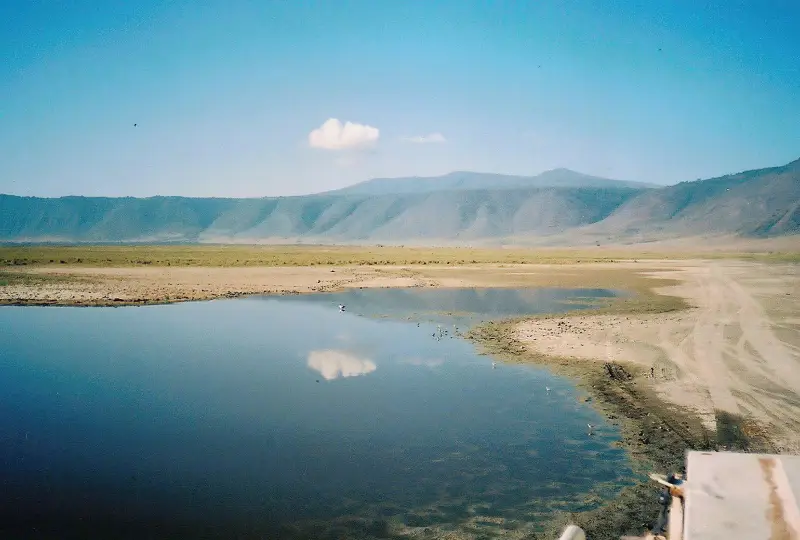Lake Eyasi Overview
Lake Eyasi is a seasonal alkaline lake located in northern Tanzania, set along the Great Rift Valley just southwest of the world-famous Ngorongoro Crater. Unlike the iconic savanna landscapes of Serengeti or Tarangire, this destination offers something different an intimate combination of culture, wilderness, and striking scenery. Its size changes dramatically with the seasons, transforming from a shimmering body of water during the rains to vast salt flats in the dry months.
The lake is surrounded by fascinating communities, most notably the Hadza (Hadzabe) hunter-gatherers and the Datoga pastoralists. Both groups have preserved traditional ways of life for centuries, making Lake Eyasi one of the most remarkable cultural destinations in East Africa. For travelers seeking experiences beyond wildlife safaris, this is a place where human heritage and natural beauty meet.
Location of Lake Eyasi
Lake Eyasi lies in the Karatu District of the Arusha Region, within easy reach of other northern safari destinations such as Serengeti, Lake Manyara, and Ngorongoro Conservation Area. It can be accessed by road from Karatu in about two hours or from Arusha in roughly five to six hours. Those arriving by air usually land at Lake Manyara airstrip before continuing by vehicle. This convenient location makes it a rewarding addition to a northern Tanzania itinerary.
Unique Experiences at Lake Eyasi
What makes Lake Eyasi truly unique is the opportunity to step into a world that feels almost untouched by modernity. Visitors can spend time with the Hadzabe, one of the last remaining hunter-gatherer tribes in Africa, joining them on early morning hunts with bows and arrows, learning about their foraging traditions, and witnessing a lifestyle based on nature’s rhythm. Equally captivating are the Datoga people, skilled blacksmiths and pastoralists who welcome guests to observe how they craft tools from metal and maintain traditions centered on cattle herding.
Beyond cultural encounters, the lake and its surroundings also provide excellent opportunities for birdwatching, photography, and gentle walking safaris. During the wet season, the waters attract large flocks of flamingos, pelicans, and migratory birds, while in the dry season the dramatic salt pans create surreal landscapes perfect for photographers.
Best Time to Visit
Lake Eyasi can be visited throughout the year, but the experience changes with the seasons. From June to October, during the dry months, access is easier and cultural visits are more comfortable, while the lake itself often dries into vast salt flats. From November to May, rains fill the lake, attracting spectacular birdlife, especially flamingos and migratory species. This green season offers more vibrant landscapes but can make roads muddy. Travelers seeking cultural immersion can visit at any time of year, as both the Hadzabe and Datoga live permanently in the area.
Wildlife and Birdlife Around Lake Eyasi
Although Lake Eyasi is not a traditional wildlife safari destination, it offers rewarding encounters for those who appreciate birds and smaller creatures. The wetlands and shores are frequented by flamingos, storks, herons, and pelicans, while hornbills and other woodland species are common in the surrounding bushland. Small mammals such as monkeys, hyraxes, and occasional antelopes can be spotted, adding to the ecological diversity of the region.
Accommodation at Lake Eyasi
Visitors to Lake Eyasi can choose from a range of accommodation options that suit different travel styles. Rustic tented camps and charming lodges blend comfort with proximity to nature, while community-based campsites offer an authentic and immersive stay. Many properties are designed to reflect the landscape, providing sweeping views of the lake and convenient access to cultural tours. Popular choices include Lake Eyasi Safari Lodge and Kisima Ngeda Tented Camp, both known for their welcoming hospitality and scenic locations.
Adding Lake Eyasi to a Safari Itinerary
Lake Eyasi is often included as a cultural extension to the classic northern Tanzania safari circuit. After days spent tracking wildlife in Serengeti or exploring the Ngorongoro Crater, a stop at Eyasi introduces travelers to another side of Tanzania the human story. Spending one or two nights is usually enough to visit both the Hadzabe and Datoga, enjoy a walk along the lakeshore, and capture the striking landscapes at sunrise or sunset.
Why Visit Lake Eyasi
For travelers looking to go beyond traditional safari experiences, Lake Eyasi is a destination of remarkable depth and authenticity. It is a place to engage with cultures that have preserved their way of life for centuries, to walk across landscapes shaped by seasonal rhythms, and to witness birdlife and sunsets that rival any in East Africa. Whether as a short cultural excursion or an overnight adventure, Lake Eyasi adds meaning and diversity to a Tanzanian safari journey.

